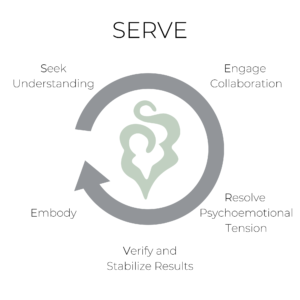Will participating help on a personal level? In other words, will we apply the work to ourselves and each other? To make it financially viable, it would need to meet personal and professional growth goals.
Absolutely. The course of study is designed with the understanding that you will be practicing AAIT™ with yourself as well as with clients. During our training sessions, there are opportunities to work with the trainer personally in addition to practice time with other professionals. Our strong intention is that in the course of our time together, you will become more and more confident in applying what you’ve learned personally and professionally. Also, we will discuss those times when you need the support of another practitioner to create and hold a “container” for your work.
Does this training qualify for CEUs?
AAIT™ trainers comply with guidelines from the National Board of Counselors regarding continuing education for counselors. This comprehensive checklist aligns with the continuing education requirements for most state licensure boards for most professions. Nonetheless, we urge you to check with your state board. Click here to take a look at their requirements.
Most courses are also eligible for at 22.5 CEUs for an additional small fee.
I currently use cognitive behavior therapy? How is this different?
AAIT™ is more comprehensive and uses more effective and faster tools. While CBT only deals with thoughts and behaviors, AAIT™ is more experiential and involves the WHOLE person including thoughts, images, emotions and body sensations. Another fundamental difference is that CBT also doesn’t generally lead to a higher state of consciousness.
Outside of the training sessions, how many hours per week of study and practice are necessary?
Participants in AAIT™ Foundations are expected to engage in personal practice and partner practice. Partner practice is generally an hour a week for four weeks. People typically spend between 15 – 30 or more minutes per day in personal practice.
Participants in the AAIT™ Fellowship program can expect to spend an hour a week with a practice partner, 20 – 30 minutes in daily personal practice for the duration of the course. There is an expectation that you will practice what you are learning with clients and study the principles, phases and practices used in AAIT™. Finally, you will be expected to write a 500 – 800 word essay each month.
There will be some reading – not an overwhelming amount. Your materials are included in the tuition. This includes the training manual, Creating a Crucible for Transformation, Journey to Oneself, PEAT New Pathways, and Return to Oneness. The more you study these materials the richer your experience will be.
Participants also have the support of the community of practitioners for enriched learning and support.
What is the nature of the training?
This training is very experiential and practical. You will not be sitting in a room taking notes day after day. You will be observing and practicing procedures while learning more about how to lean into the principles and phases that support this work. The bonus consultation groups and online community insure that you understand how to implement what you have learned and address any snags you may encounter along the way.
Beyond that, most professional organizations have means of gathering CEUs other than through traditional outlets. For instance, reading, supervision and trainings such as this often qualify as continuing education hours, even if not pre-approved by your profession’s governing organization. That said, of course, check with your professional organization and you will likely find CEU guidelines for which this training would qualify.
Are there opportunities to continue professional development and become a trainer?
Absolutely. Our intention is to make this transformative work available to people who are hurting. To that end, there is a training journey to help us achieve our mission.
The training journey typically begins with AAIT™ Foundations. Though some jump right into applying for the AAIT™ Fellowship.
The next step in becoming a trainer is to serve as an apprentice in the Fellowship. In this experience, you receive supervision, support and training aimed at preparing you to step into the role as a trainer. This route is open to licensed mental health providers.
Another route to becoming a trainer is to become a trainer of Curate Your State and AAIT Foundations. This route is open to those Fellowship graduates who are coaches or spiritual directors and not licensed mental health providers.
If you still have questions, don’t be shy. Reach out to us at info@aait.solutions

